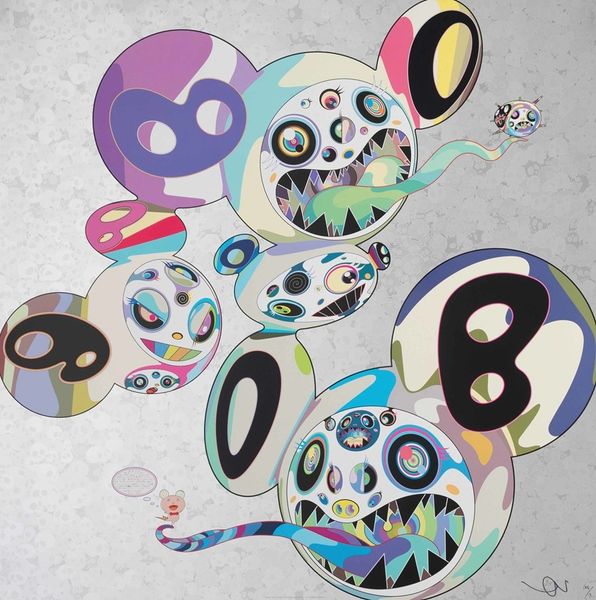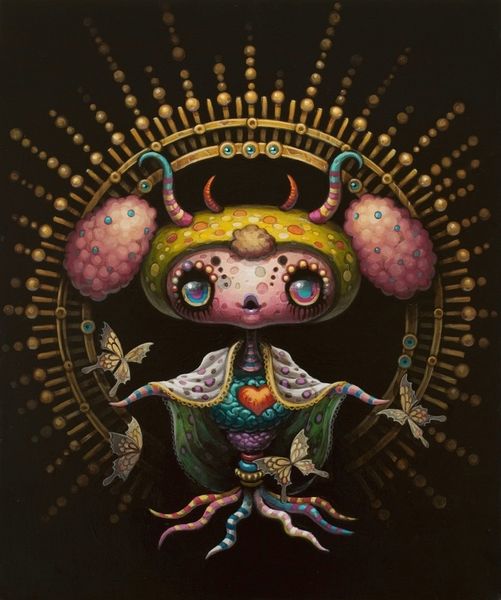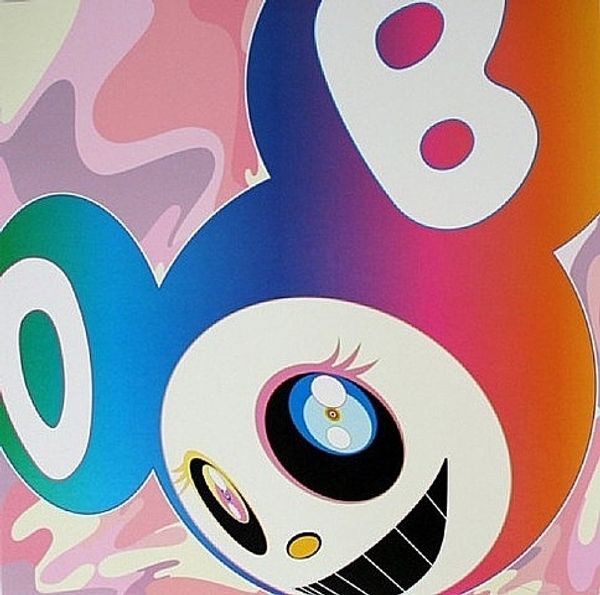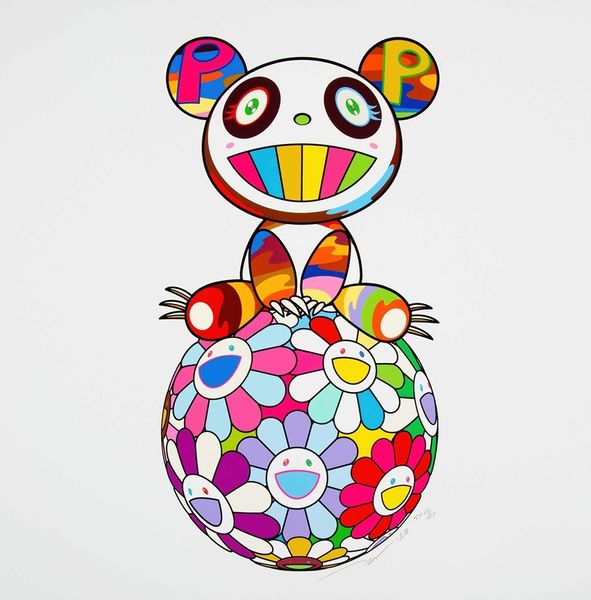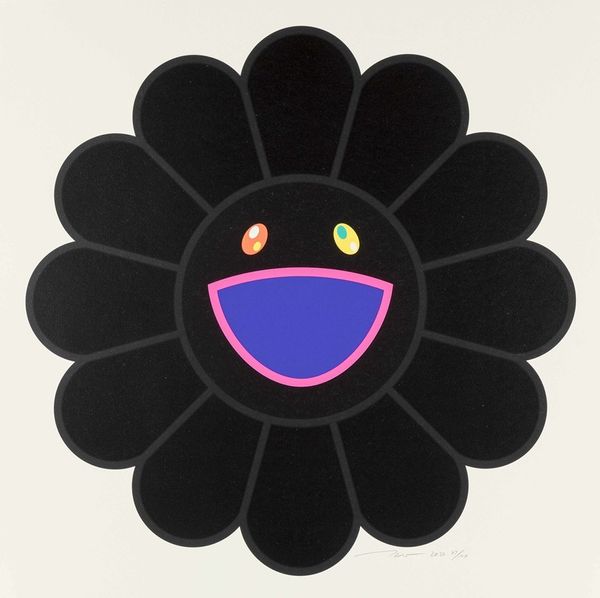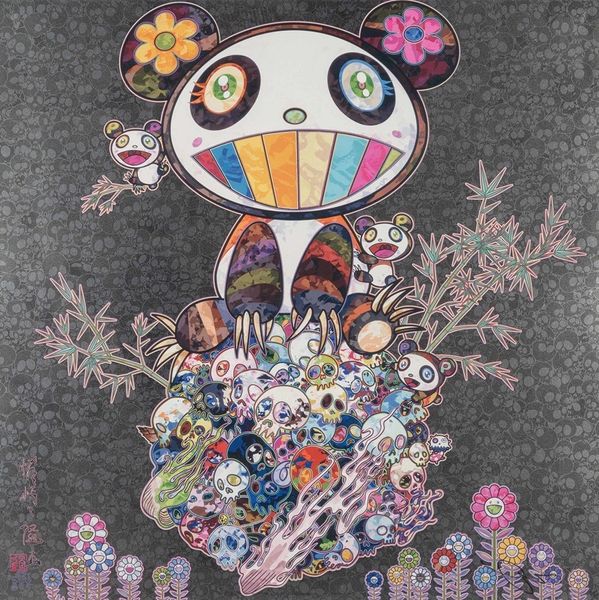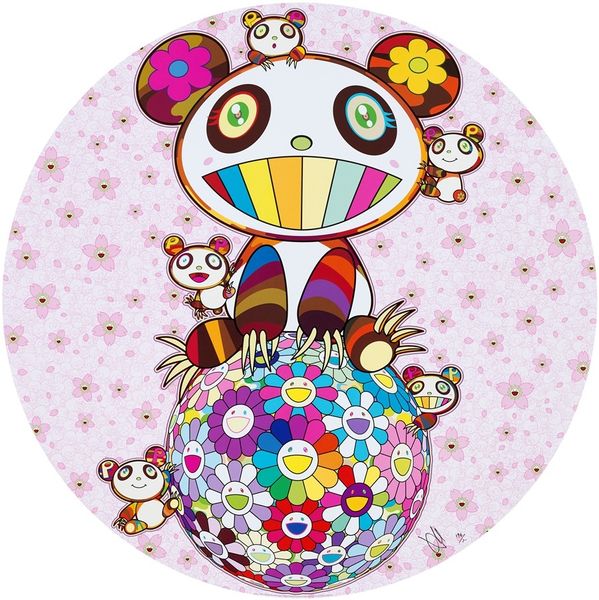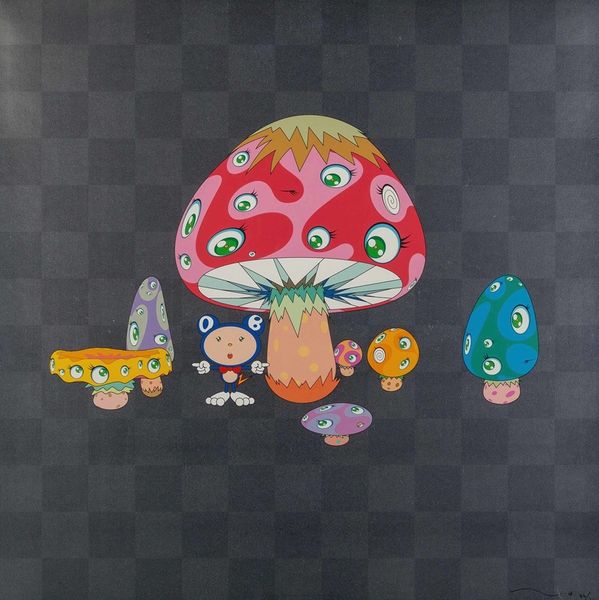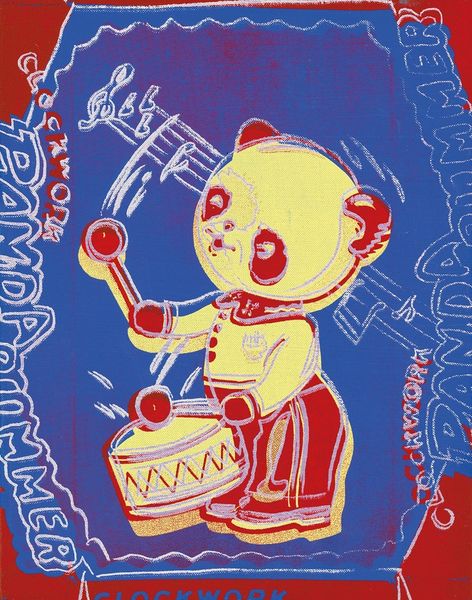
#
neo-pop
Copyright: Modern Artists: Artvee
Editor: So this is Takashi Murakami's "Dob" from 2020, done with graphic art techniques. It's got this cartoony character on a field of smiling flowers... kind of a mix of cute and unsettling. How do you interpret this work in its historical context? Curator: Murakami's work, and specifically Dob, emerged in a Japan grappling with its post-war identity and its relationship to global consumer culture. He critiques and embraces at once the flatness of anime and manga, responding to the legacy of American Pop Art while rooted in uniquely Japanese anxieties. What role do you think the cuteness plays here? Editor: It's like a Trojan horse. The "kawaii" aesthetic is appealing, but then there's something off, something almost menacing behind the big eyes and smiling face. Maybe it's about the dark undercurrents beneath the surface of consumerism? Curator: Precisely. Murakami calls this 'Superflat,' collapsing high and low art, and blurring the lines between commodity culture and historical trauma. Think about the societal pressures of conformity in Japan, the aftermath of economic bubbles and social anxieties that Dob might embody. Does Dob seem to be an optimistic figure to you? Editor: Not really. Now that you mention it, there is something empty about its smile and its stylized form; like it reflects the overwhelming and sometimes numbing experience of modern culture. He also strikes me as a rather isolated and lonely figure... Curator: Exactly. This work is deeply embedded in its cultural moment, both critiquing and becoming part of the very system it examines. Thinking about the institution of art and it's engagement in broader consumer culture really gives us the proper background for viewing this piece. Editor: I see how important the historical context is to understand the artist’s message! It goes far beyond just "cute." Thanks for providing this socio-historical perspective!
Comments
No comments
Be the first to comment and join the conversation on the ultimate creative platform.


